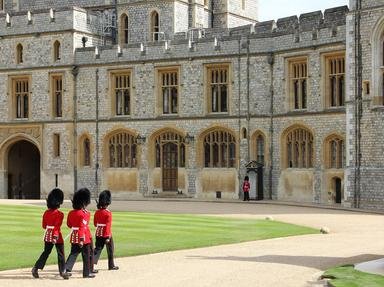Quiz Answer Key and Fun Facts
1. When William of Normandy first sent a representative to ask Matilda of Flanders, his future Queen's hand in marriage, she replied she could never marry a bastard. What did William do as a result of this?
2. As a child, William's illegitimacy put him in constant danger from his kinsfolk who had a more legitimate claim to his inheritance of Normandy. Once, while asleep in a castle at Vaudreuil as a child, a murderer crept in and did what?
3. William succeeded his father as Duke of Normandy when he was how old?
4. When the English King, Edward the Confessor, died in 1066, there were three claimants to his throne. One was Harald III of Norway, the second was the powerful Earl of Wessex, Harold Godwinson, and the third was William himself. What was the *main* reason that William gave for his claim to the English throne?
5. What a mess! Edward died without naming his heir and a confused assembly of notable personages who happened to be present in the area for the Feast of the Epihany hastily elected Harold as their next ruler. The enraged Harald of Norway and William of Normandy both immediately began plans for separate invasions to claim the throne of England. Who landed first?
6. The English didn't meekly hand the throne to William. Instead, they defiantly announced another King in his place, one Edgar, who was descended down through another line of English kings. That was like a red rag to a bull for our worthy William and he set out to teach them all a well deserved lesson. Edgar never was crowned, London and the areas all around attacked and subdued by William - and he was finally crowned at Westminister Abbey on what date?
7. William's coronation was not a peaceful event. As the shout of acclamation filled the Abbey, his Norman soldiers waiting outside the church thought that he was under attack and consequently, and rather warmly, did what?
8. The south of England quickly settled down under William, but the north continued to cause trouble for years, assisted of course by the Scots, and also by another invasion by the Danes under King Sweyn II. William finally lost patience with them all and his revenge was rather terrible. He burned and destroyed absolutely everything in sight, killed all the livestock and poured so much of what savoury substance on the ground that it took over 100 years to recover?
9. William's lengthy split with his eldest son Robert began in 1077 over which piddling event?
10. William was described as being taller than average, fair in colouring, remarkably strong, rather fierce in expression and always clean-shaven. Possessing excellent health all his life, he nevertheless grew tubby in his last few years, leading the French King Phillip II to say that he looked like what?
Source: Author
Creedy
This quiz was reviewed by FunTrivia editor
bloomsby before going online.
Any errors found in FunTrivia content are routinely corrected through our feedback system.

